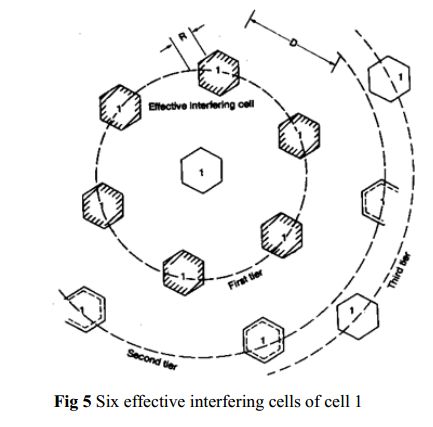Explain the cochannel interference reduction factor
4. Explain the co channel interference reduction factor.
Reusing an identical frequency channel in different cells is limited by co channel interference between cells, and the co channel interference can become a major problem. Assume that the size of all cells is roughly the same. The cell size is determined by the coverage area of the signal strength in each cell. As long as the cell size is fixed, co channel interference is independent of the transmitted power of each cell. It means that the received threshold level at the mobile unit is adjusted to the size of the cell. Actually, co channel interference is a function of a parameter q defined as
q = D/R
The parameter q is the co channel interference reduction factor. When the ratio q increases, co channel interference decreases. Furthermore, the separation D is a function of K, and C/I,
D=f(K,C/I)
Where K, is the number of co channel interfering cells in the first tier and C/I is the received carrier-to interference ratio at the desired mobile receiver.
In a fully equipped hexagonal-shaped cellular system, there are always six co channel interfering cells in the fist tier, as shown in Fig.5 ; that is, K = 6. The maximum number of K, in the first tier can be shown as six. Co channel interference can be experienced both at the cell site and at mobile units in the center cell. If the interference is much greater, then the carrier-to-interference ratio C/I at the mobile units caused by the six interfering sites is (on the average) the same as the C/I received at the center cell site caused by interfering mobile units in the six cells. According to both the reciprocity theorem and the statistical summation of radio propagation, the two C/I values can be very close. Assume that the local noise is much less than the interference level and can be neglected. C/I then can be expressed as
Where ᵞ is a propagation path-loss slope determined by the actual terrain environment. In a mobile radio medium, ᵞ usually is assumed to be 4. K is the number of co channel interfering cells and is equal to 6 in a fully developed system, as shown in Fig. 5. The six co channel interfering cells in the second tier cause weaker interference than those in the first tier. Therefore, the co channel interference from the second tier of interfering cells is negligible
 |
| Six effective interfering cells of cell 1 |




